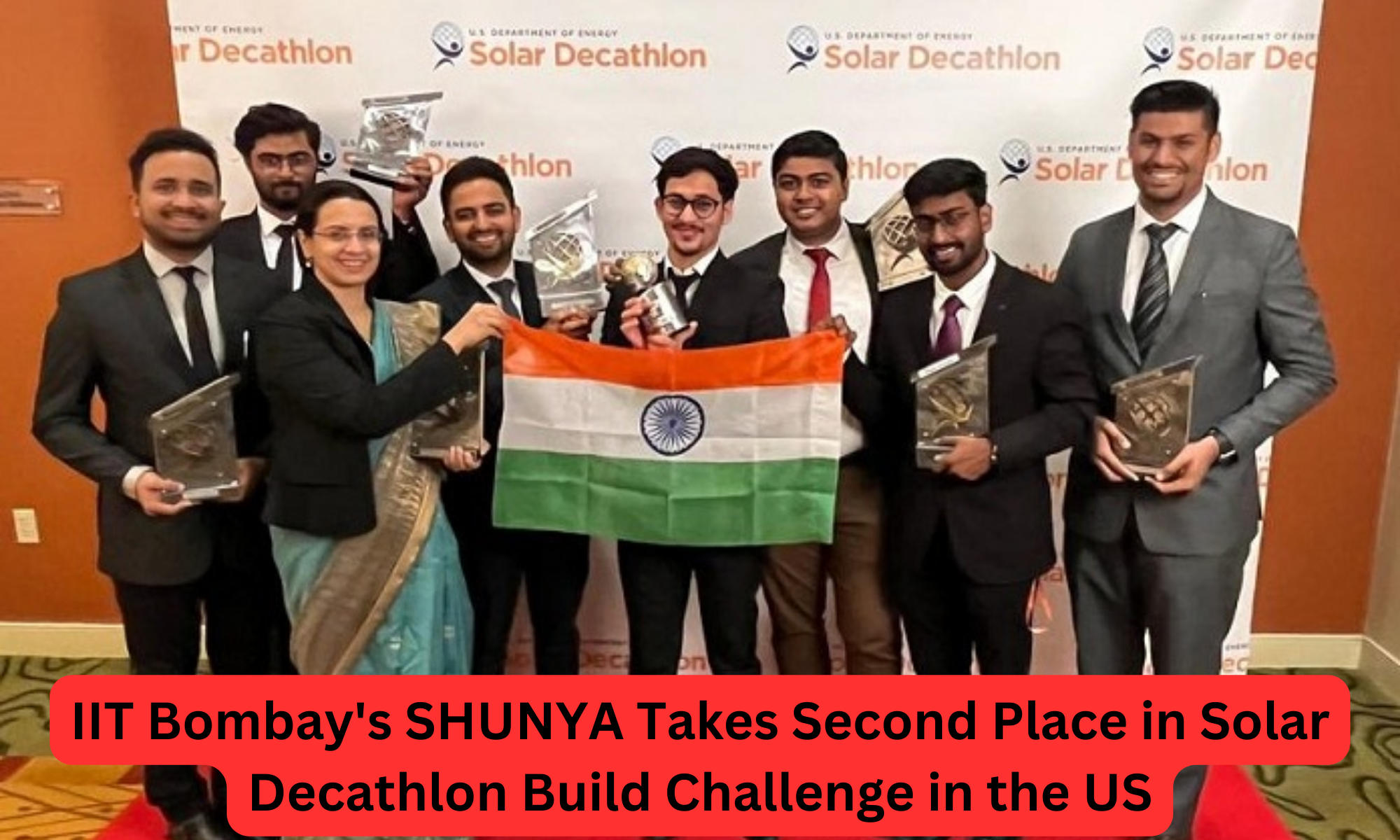IIT Bombay’s SHUNYA Takes Second Place in Solar Decathlon Build Challenge
The SHUNYA team from the Indian Institute of Technology (IIT) Bombay earned the second position in the Solar Decathlon Build Challenge held in the US. They designed a zero-energy house to tackle air pollution issues in Mumbai’s hot and humid climate. SHUNYA is a group of students from IIT Bombay who are committed to creating a sustainable future.
Buy Prime Test Series for all Banking, SSC, Insurance & other exams
IIT Bombay’s SHUNYA Takes Second Place in Solar Decathlon Build Challenge: Key Points
- Out of 32 teams from around the world, SHUNYA was the sole representative from India in the contest.
- The team constructed a house with a 14-kW solar PV Plant and an innovative in-house automation system.
- The automation system manages a dehumidifier system created specifically for the weather patterns of coastal areas.
- This house utilizes water in an incredibly efficient manner due to its water-saving fixtures, recycling system, and rainwater harvesting setup, using 80% less water than a typical home.
- Over 50 students from IIT Bombay‘s engineering, architectural, and management departments, hailing from more than 16 departments, comprise the team.
Emirates introduces first robotic check-in assistant in the world
About Solar Decathlon Build Challenge
- The Solar Decathlon Build Challenge involves teams working for two years to create and operate houses in their own region, with the ultimate goal of showcasing innovative solutions for real-world problems in the building industry.
- The competition culminates in the Solar Decathlon Competition Event at the National Renewable Energy Laboratory in April 2023, where teams were judged on the successful operation of their houses and the excellence of their solutions by industry experts.
- Additionally, teams are given the opportunity to showcase their work to the public through local exhibitions, and winners receive national exposure through media outreach efforts, benefiting both participants and their academic institutions.



 Indian Olympic Medal Winners List Till N...
Indian Olympic Medal Winners List Till N...
 Who is the Inventor of the Gramophone?
Who is the Inventor of the Gramophone?
 HS Dhaliwal Appointed New DGP Of Andaman...
HS Dhaliwal Appointed New DGP Of Andaman...
